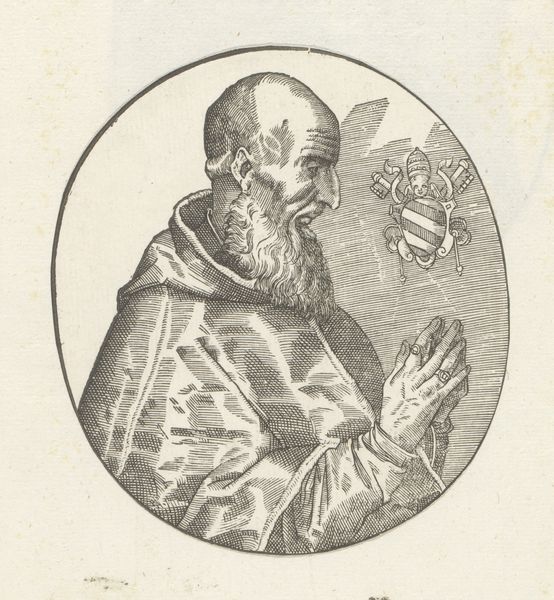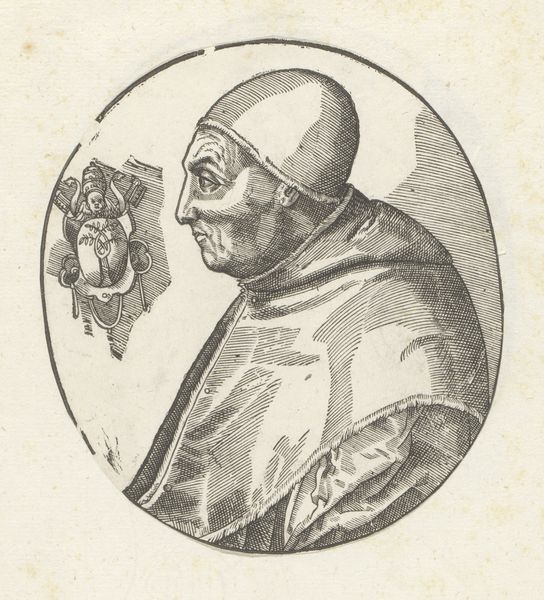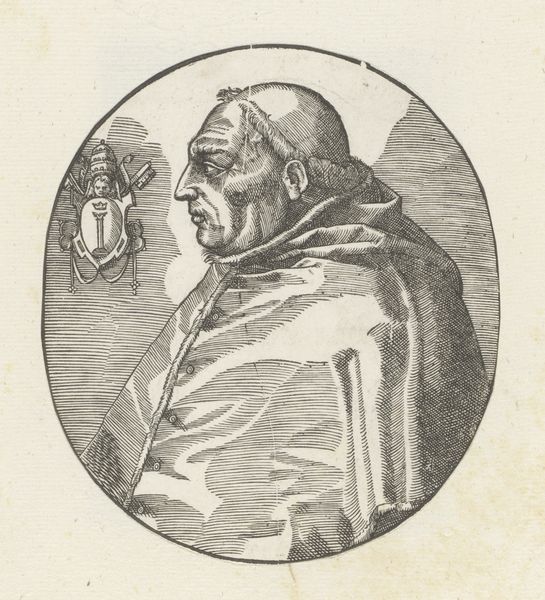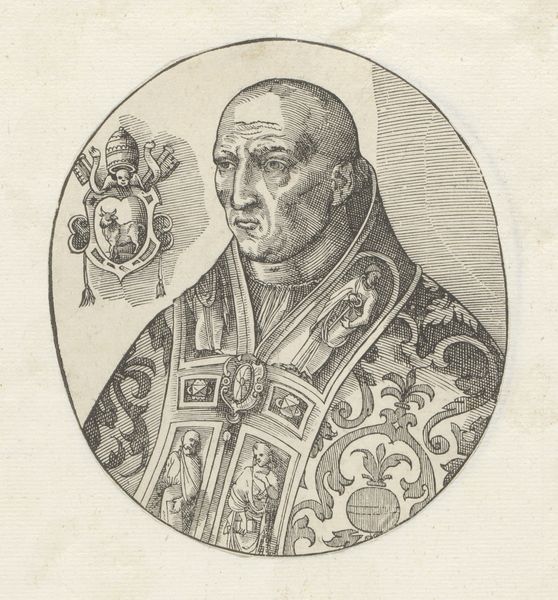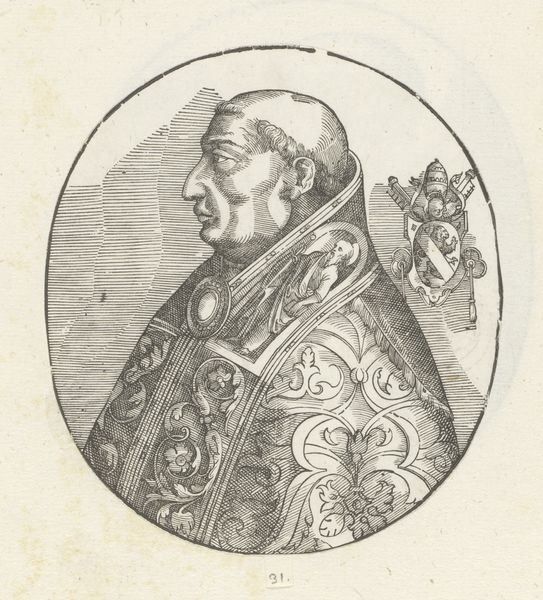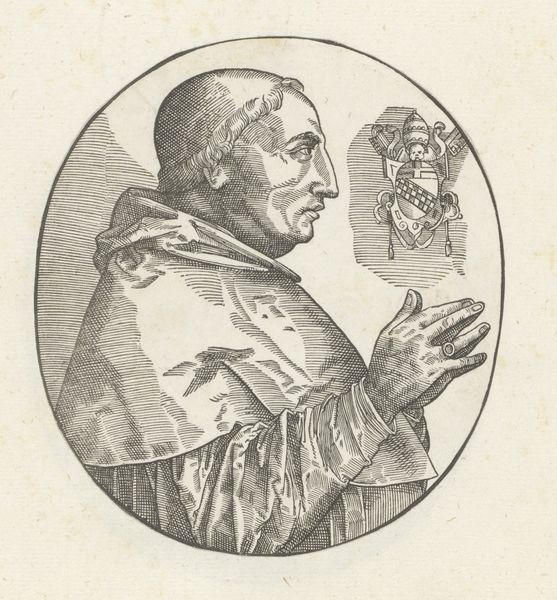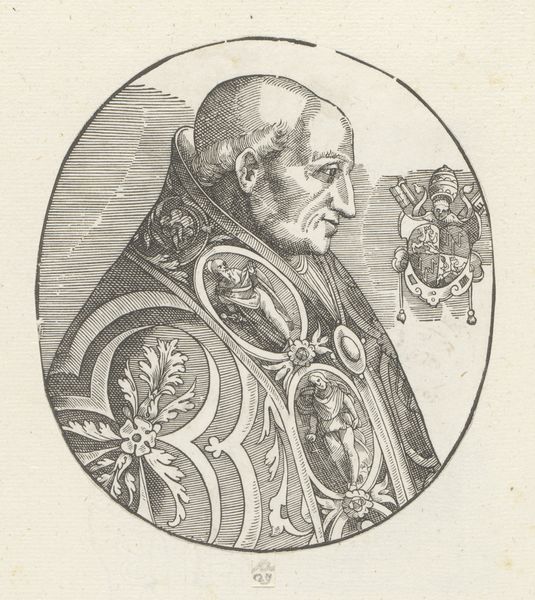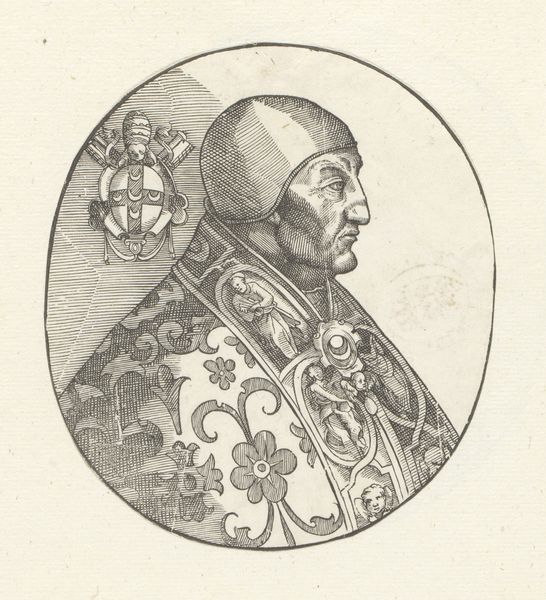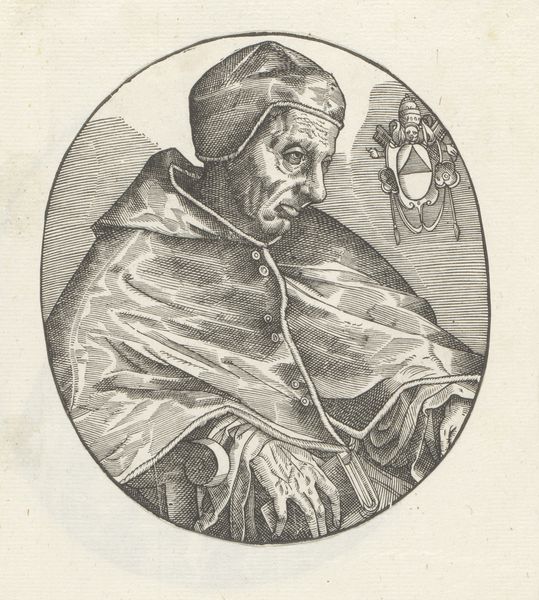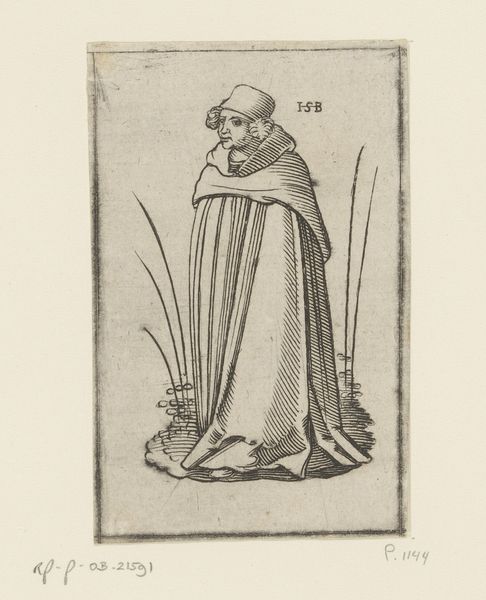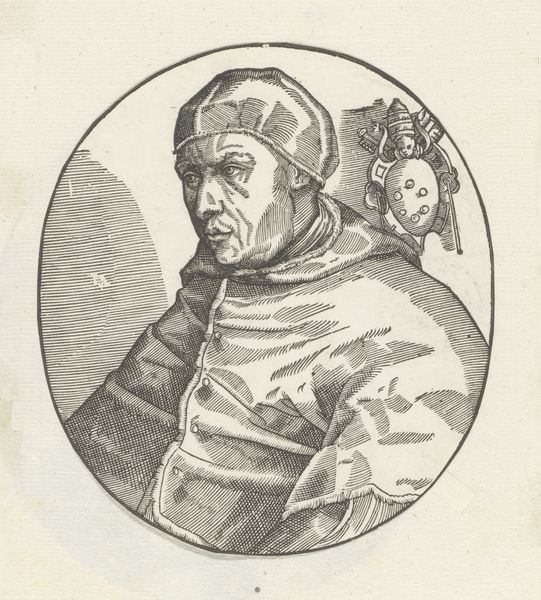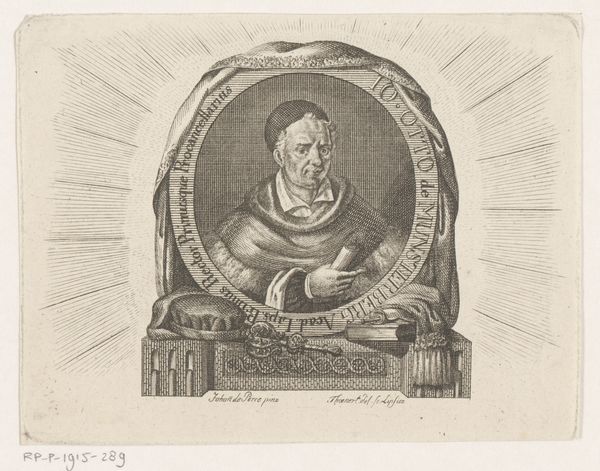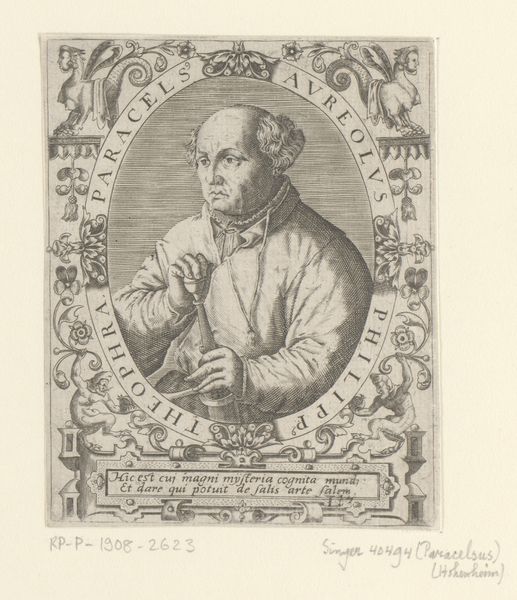
print, engraving
#
portrait
# print
#
11_renaissance
#
history-painting
#
academic-art
#
italian-renaissance
#
engraving
Dimensions: height 128 mm, width 112 mm
Copyright: Rijks Museum: Open Domain
Curator: This is an engraving from sometime between 1549 and 1573, titled "Portret van paus Alexander VI," or "Portrait of Pope Alexander VI." It’s a profile depiction, quite stark in its presentation. Editor: My first thought is severity. The tight, circular frame and the limited tonal range contribute to this feeling of austere authority. It's fascinating to see such directness in portraiture of the era. Curator: Absolutely. The engraving medium itself speaks volumes. It was a highly reproducible method, a kind of early mass media. What was once painstakingly rendered by hand became easily disseminated. Editor: And that dissemination speaks directly to power dynamics. This isn’t just an image; it’s an assertion of the Papacy’s presence, designed to be circulated and consumed widely. Alexander VI was a deeply controversial figure, so portraying him this way is loaded with intention. Curator: Consider the technical skill involved here. Look at the incredibly fine lines creating texture and shadow, particularly in the folds of his garment. An engraver’s mastery allowed them to modulate tone and volume in this manner. The production process also relied on various forms of skilled labor. Editor: Indeed, there’s a conscious attempt to construct and reinforce authority, particularly given the controversies surrounding Alexander VI. How does the production itself serve these agendas, and what socio-economic conditions allowed it? This portrait is far from neutral; it’s deeply entrenched in religious power structures. Curator: By using engraving, you are now speaking to a wider audience that before, allowing images such as this one to get the news out faster. Editor: It serves to reify his image, legitimizing his authority, at least for his devout. It gives the message "This is your leader," and asks people to receive it as so. It makes me question, how much of his original intent and desires are infused into this one singular image. Curator: In exploring "Portret van paus Alexander VI," we uncover layers of artistic skill, historical context, and perhaps more insidiously, social message embedded within the engraving. Editor: Agreed. It has been insightful to consider this image not only as an artwork but also as a reflection of power, faith, and societal norms, of the Italian Renaissance.
Comments
No comments
Be the first to comment and join the conversation on the ultimate creative platform.
